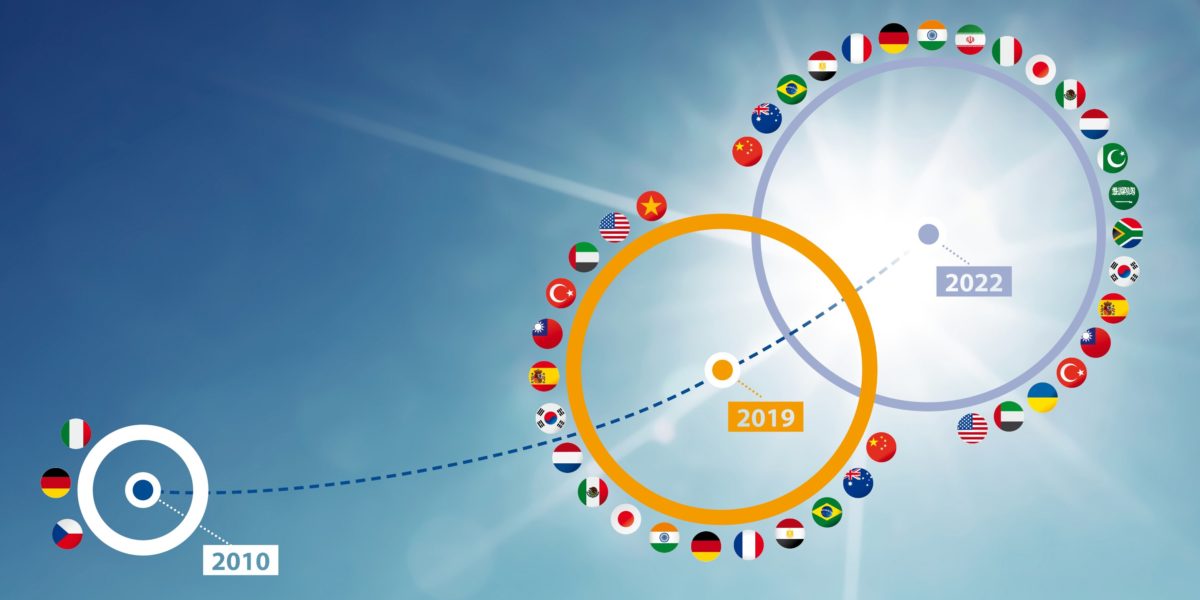For a long time, Mexico has been Latin America’s hottest PV market, by virtue of incredible record-low bids for utility-scale solar in the country’s first renewable energy auctions. In other highlights, large volumes of PV capacity were allocated by Mexican administrators, encouraging installation levels commenced, and a more than promising distributed generation business started to develop.
This strong momentum, however, came to a shuddering halt in July of last year, when Andrés Manuel López Obrador (AMLO) was elected president. In the first months of his term, AMLO and his government were nothing short of cryptic on energy plans. One indication is that the administration will seek to reestablish a central role for the state-owned utility CFE, thereby limiting the role of private companies.
Six months after AMLO’s appointment, the first public announcements were worse than expected: The long-expected fourth auction was canceled, future renewables auctions were halted, and contracts awarded in the three previous auctions were placed under review. And on top of everything else, the CFE approved a plan to expand generation capacity with 13 GW of new facilities owned and operated by the company — with none of the new plants incorporating renewable energy.
“A whole campaign is being made that clean energies are the cheapest and it is a lie,” CFE general director Manuel Bartlett Díaz said at the time. He also said, however, that the supporters of clean energy should not be worried, as the CFE is in favor of increasing renewables capacity — without providing details or a timeline.
This disappointing debut has so far produced uncertainty among investors and energy players, and has tempered the euphoria of the past few years. However, it has not halted the solar market. The construction of solar parks that were awarded in previous auctions continues and won’t be completed before the end of 2020.
These first negative signals from the government, on the other hand, should not be overestimated. The seeming hostility towards renewables should be seen in light of AMLO’s more general efforts to demonstrate a clear distinction between his government and corruption within the Mexican economy. It is likely, in fact, that after this distance is made clear, the Secretaría de Energía and CFE will begin reconsidering solar as a cheap and easy-to-implement option to increase utility-scale power generation capacity.
One demonstration of this is the government of Mexico City, whose mayor is Claudia Sheinbaum. Sheinbaum served as the Secretary of the Environment of Mexico City during AMLO’s term as mayor. She has stated that the city’s 350 MW plan, which includes rooftop PV and also small solar parks, will be realized with the support of private investors alongside CFE. This confirmed rumors, which had been circulating in the PV industry, that private-public partnerships may be the basis of Mexico’s future large-scale PV market.
Regulations for storage are expected to be issued in the second half of the year and with that, private solar PPAs are becoming a feature of the country’s energy landscape — albeit slowly. Mexico has currently reached 4 GW of installed solar capacity, of which 3.3 GW is utility scale, and by the end of 2018 it had surpassed Chile as Latin America’s largest solar market.
This content is protected by copyright and may not be reused. If you want to cooperate with us and would like to reuse some of our content, please contact: editors@pv-magazine.com.




The basis for optimism here seems very thin. Low renewables prices come from competition, not dinosaur state monopoly (see South Africa, Vietnam, Arizona, Florida, etc.) . CFE’s actions and statements indicate adamant hostility to the one model for the transition that is known to work. AMLO is being a fool here. Lula in Brazil was much better, in spite of Belo Monte.